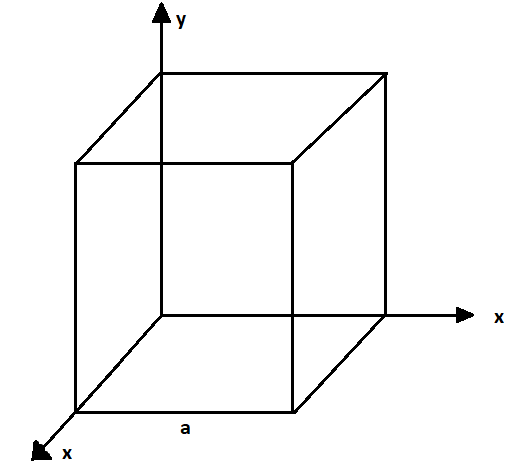Question
Question: (a) An electric dipole of dipole moment \(\vec p\) consists of point charge \( + q\) and \( - q\) se...
(a) An electric dipole of dipole moment p consists of point charge +q and −q separately by a distance 2a apart. Deduce the expression for the electric field E due to the dipole at a distance x from the center of the dipole on its axial line in terms of the dipole moment p. Hence show that the limit X>>a, E→4πε0x32p.
(b) Given the electric field in the region E=2xi^, find the net electric flux through the cube and the charge enclosed by it.

Solution
Recall the formula for the electric field at a point due to point charge and also the formula for the electric field on the axial line of an electric dipole. Also keep in mind what is the electric flux? What is its formula? And also its nature and characteristics.
Complete step by step solution:
(a) Electric field on axial line of an electric dipole is given by,

Let us assume that the P is the point at a distance r from the center of the given dipole on the side of charge –q.
Now, the formula for the electric field at point P due to –q is given by,
E−q=−4πε0(r−a)2qp^
Now, the electric field at point P due to +q is given by,
E−q=4πε0(r−a)2qp^
Therefore, the total electric field at point P is,
E=E+q+E−q
⇒E=4πε0q[(r−a)21−(r+a)21]p^
⇒E=4πε0q(r2−a2)24arp^
At r=x, we have
⇒E=4πε0q(x2−a2)24arp^
In the question it is given the limit, so for x>>a,we get
⇒E=4πε0x34qa
On further solving, we get
E=4πε0x32p
Hence, we got the desired result.
(b) The face of the cube that is perpendicular to the direction of x-axis, generates the flux. The face of the cube is parallel to the xy and xz plane and the electric field is parallel to the face, so the electric flux through them is zero.
Electric flux through the left face of the cube is given by,
ϕL=ELa2cos180∘=0
Now, the electric flux through the right face of the cube is given by,
ϕR=(ER)(a2)cos0∘
On putting the value ER=2a, we get
⇒ϕR=2a3
So the net flux through the cube is given by ⇒ϕR=2a3
And now the charge enclosed by the cube is given by,
ϕ=ε0qenclosed
Put the value for the flux from above in this equation, we get
⇒2a3=ε0qenclosed
On further solving, we get the charge enclosed by the cube,
qenclosed=2a3ε0
Therefore, we get the net flux as ϕR=2a3 And, the charge enclosed by the cube as qenclosed=2a3ε0.
Note: Always remember that the electric flux is proportional to the number of electric field lines. It is basically defined as the measure of flow of the electric field through a given area. Also remember that the electric flux through a closed surface does not depend on the shape or size of the surface.
